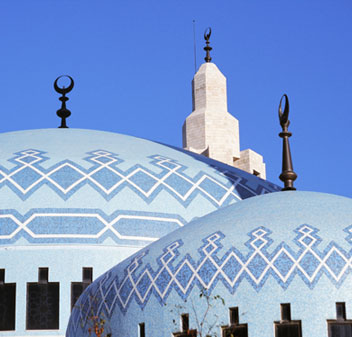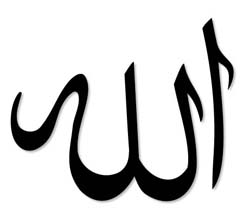Introduction to Islam (Part 3 of 5: Faith)
 I began this series examining the founding of Islam and the person of Muhammad. Next, I took a very broad look at the Qur’an and some of its teachings and application to Islamic life.
I began this series examining the founding of Islam and the person of Muhammad. Next, I took a very broad look at the Qur’an and some of its teachings and application to Islamic life.
Islam demands of its believers “faith” and “religion”. In today’s entry I would like to look at the “faith” of Islam. I will deal with the demands of “religion” tomorrow.
As I said yesterday, I have done my best to ensure factual accuracy in all these posts and have used Islamic sources as much as possible to ensure that I’m not propagating Christian misconceptions of Islam. I did send this to some Muslim friends for comment, but I have yet to hear back. If you are a follower of Islam and believe that I have misrepresented your religion, please drop me an email and I will remedy the situation.
The Articles of Faith within Islam are thus:
1. The existence and unity of Allah: Muslims are absolute monotheists and unitarians. Even the suggestion of any kind of subdivision or plurality of God is utterly rejected. Islam explicitly rejects the divinity of Christ and the doctrine of the Trinity.
2. The existence of Angels: Muslims believe in malak (angels). These malak perform similar functions as believed by Christians. Muslims also believe in good and evil jinn, shadowy spirits who frequent ruined houses and desert places. The devil is described as a jinn or angel who refused Allah’s order to bow before Adam.
3. Sacred Books: Muslims believe Allah has revealed his commands to men through his prophets and through 104 sacred books, only four of which, it is asserted, now remain:
1. The Pentateuch (given to Moses)
2. The Psalms (given to David)
3. The New Testament (given to Jesus)
4. The Qur’an (given to Muhammad)
It is claimed that the Jews and Christians “twisted” their own Scriptures, but that the Qur’an is the final, perfect revelation of God to mankind.
4. Prophets: Muslims believe that Allah sent many prophets (Adam, Noah, Abraham, …, Moses, Jesus and Muhammad). Some of these prophets can be found in the Christian Bible, some are found in the Qur’an and some are not recorded in either.
The Qur’an asserts that Isa (Jesus) was born of the virgin Maryam (Mary), but that He was only a prophet. The Qur’an strenuously denies His deity and His atoning death, suggesting that another man was crucified in His place (although there is a variety of interpretation as to what exactly happened). The interpretation of “Messiah” is also rather different from the Jewish and Christian understanding.
It is asserted that towards the end of the world, Isa will return and join in a battle against the anti-Christ. After winning the battle, He will convert all the Jews and Christians to Islam, marry and have children, then die and be buried near Muhammad.
5. Day of Judgment and resurrection of the dead: This is described in similar fashion as it is in the Christian Bible: natural catastrophes, anti-christ, darkening of the sun and moon, Jesus’ second coming etc.
However, after the resurrection, people will wander for forty years as their deeds are “weighed”. Then everyone will have to cross a very narrow bridge:
1. Some will be saved immediately
2. Some will fall into hell, later to be released (somewhat similar to the Catholic concept of Purgatory)
3. The infidels will fall and remain in hell forever
Heaven is predominantly described as a place of physical, sensual delights for men – beautiful women, couches, flowing cups and luscious fruits (Sura 55:46-61, 56:4-26 etc).
6. Absolute predestination: Although there is belief in divine pre-ordainment, Muslims also believe that humans have free will, that is to say, the ability to choose between good and evil and are therefore culpable before God for their actions.
Next Time
In Part 4 I intend to look at Islam’s demands of “religion”.

Pingback: Introduction to Islam (Part 4 of 5: Religion) | This Restless Pilgrim